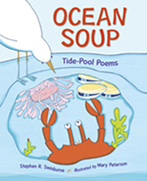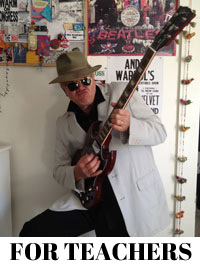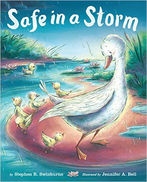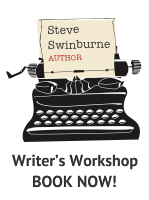Steve Swinburne
Children’s Book Author and School Visits
Writing Tips
Making Nonfiction Writing Come Alive
By Stephen SwinburneFind the Passion
In order to make nonfiction writing come alive, it helps if you’re passionate or curious about the subject. I’m passionate about the natural world, so I love researching and writing about nature. Find something that you are really, really interested in and then you’ll have an easier time researching and writing about your topic.
Do “Octopus Research”
Like an octopus searching everywhere for food, I have fun and search everywhere for information. Try to dig up really cool facts. Read books and magazines. Check out web sites. Interview experts on the phone. Take field trips. Join an organization. Visit a zoo or museum or historical society. Ask your librarian. Become a mini-expert. Act like a sponge and soak up information and then sit down and write.
Write a Great Beginning Sentence
In the first sentence you want to hook the reader. Here are some ways to grab the reader’s interest; Begin with a question (Do you know that Emperor penguins live where it’s 80 degrees below zero?) Begin with dialogue. (“I feel like a large caterpillar this morning”, said George as he tumbled out of bed.) Begin with an interesting fact. (Sloths don’t poop in trees!) Begin with an unusual image or picture. (The wind blew so hard it lifted the butterfly high above the ocean waves.) Begin with action. (The pack of wild dogs woke, stretched and set off at a trot to hunt.) Begin in first person. (On an early autumn evening, I sit on a hillside listening for coyotes.)
Show, Don’t Tell and Write With Details and Verbs
Try to write with specific honest information that shows, rather than tells, the reader what is happening. For example, “The wolf looks angry” is a sentence that tells. “The wolf’s lips curled revealing its sharp teeth” is a sentence that shows a reader what is happening and shows how angry the wolf is. Put a clearer picture in the reader’s mind by using concrete information and replacing general words with specific words. Instead of writing, “Steve likes candy,” try “Steve likes M & M peanuts.” OR, better yet, go for a stronger verb: “Steve adores M&M peanuts.” Instead of writing, “I heard a noise,” you might write, “I heard a scream or a squeak or a rattle or a creak or a moan or a phone.” Make interesting details and strong verbs your friend!
Tell Your Story in Different Ways
There are lots of ways to write your nonfiction story. Try writing a poem. How about a photo essay? You might write an interview, a funny story, a first-person account, a day-in-the-life-of story, a how-to, an historical review. If you’re stuck, read something by one of your favorite writers to get your own writing juices going. Have fun. Be creative. Let your imagination go.
Let Your Writing Cool
When you’ve finished writing, wait a day, and then come back to your story and re-read for spelling mistakes, awkward sentences, too many adjectives or adverbs, etc. Ask yourself - how can I make it better? Plan ahead and give yourself time to write just the right story!
Steve’s Easy Steps to Revision
1. Do nothing. Sleep on it. Let your writing rest. Come back to it with fresh eyes.
2. Read over your whole piece quite quickly. Circle any typos and mistakes that you spot, but concentrate on overall flow. After you’ve done this, you might want to ask a friend, classmate or colleague to read the piece. Tell them not to look for tiny errors like typos or clumsy sentences at this stage: ask whether they think it’s broadly OK, or if they have any reservations about the overall direction of the article or story.
3. Once you’ve sorted out the big picture, you can start fixing any individual sentences and words. Look out for:
- Typos and misspellings (a good tip here is to read backwards! You’ll go much more slowly, focussing on every individual word).
- Clumsy sentences and confusing or misleading phrasing (try reading your work aloud).
- Unnecessary words (check for the ones in Five Words You Can Cut).
- Commonly misused or confused words (there’s a whole list of these in the Misused Words category).
If you’re not 100% sure about a spelling, double-check with a dictionary: try Merriam-Webster for clear, succinct definitions. When you can’t quite find the right word, using a thesaurus can help (again, Merriam-Webster is good).
Good luck and happy writing!
Tips on Keeping a Journal
1. Keep it simple; write brief notes; don’t go for long, extended sentences
2. Capture the environment: What’s the weather? Sunny? Windy? Sounds? Mosquitoes buzzing? Bluejays calling? Planes overhead? Traffic?
3. Capture bits of overheard conversation; use this dialogue to bring your scenes to life in your draft
4. DON’T WORRY ABOUT GRAMMAR, SPELLING AND PUNCTUATION
5. Record what people are doing (their action), what they’re wearing: BRING THE SCENE TO LIFE WITH DETAILS
6. Leave plenty of room around your note taking for drawings, illustrations, poetry quotes, song lyrics...
7. If you can, add leaves, feathers, flowers, or other natural finds to your journal
8. Write freely...don’t censor yourself. Keep the pencil or pen moving without stopping. Write what’s on your mind. Be honest.
9. If you can’t think of anything to write...draw a picture of the scene
10. Most important: journal by hand in a paper notebook. Slow down and enjoy the process.
Great Books on Nonfiction and Writing
Books on Teaching Nonfiction Writing
- Nonfiction Mentor Texts - Teaching Informational Writing Through Children’s Literature, K-8 by Lynne R. Dorfman and Rose Cappelli, Stenhouse Publishers.
- Nonfiction Matters: Reading, Writing, and Research in Grades 3-8 by Stephanie Harvey, Stenhouse Publishers.
- Nonfiction Craft Lessons - Teaching Information Writing K-8 by Joann Portalupi and Ralph Fletcher, Stenhouse Publishers.
- Nonfiction Writing From the Inside Out - Writing Lessons Inspired by Conversations with Leading Authors by Laura Robb, Scholastic.
- Writing to Explore: Discovering Adventure in the Research Paper, 3-8 by David Somoza and Peter Lourie, Stenhouse Publishers.
Books on Writing
You’re marooned on a desert island - here are the five books on writing you need:
- The Writing Life by Annie Dillard, Harper Perennial.
- On Writing: A Memoir of the Craft by Stephen King, Scribner.
- Bird by Bird: Some Instructions on Writing and Life by Anne Lamott, Anchor. (IF you can take only one book, choose this one!)
- On Writing Well by William Zinsser, Harper and Row.
- The Elements of Style by William Strunk and E.B. White, Macmillan.
Four great books with writing lessons
- Razzle Dazzle Writing by Melissa Forney, Maupin House Publishing.
- Easy Poetry Lessons That Dazzle and Delight (grades 3-6) by David Harrison and Bernice Cullinan, Scholastic Teaching Strategies.
- The Most Wonderful Writing Lessons Ever - Everything You Need to Teach the Essential Elements - and the Magic - of Good Writing (grades 2-4) by Barbara Mariconda, Scholastic Teaching Strategies.
- 25 Mini-Lessons for Teaching Writing - Quick Lessons That Help Students Become Effective Writers by Adele Fiderer, Scholastic Teaching Strategies.





